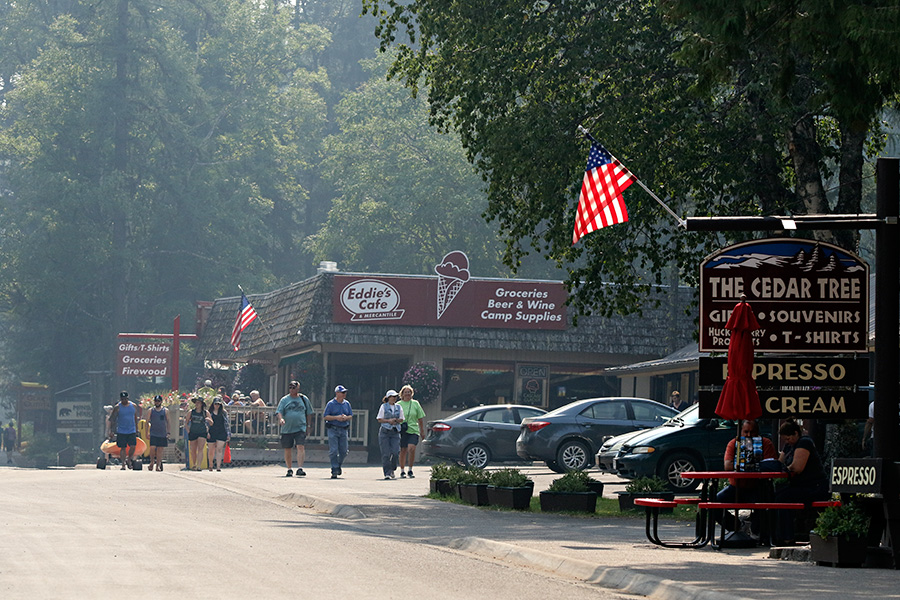As smoke settled over the Flathead Valley in late August and early September, Hilary Hutcheson, a fishing guide for Glacier Anglers and owner of Lary’s Fly and Supply in downtown Columbia Falls, noticed a dwindling number of people walking into her storefront. As conditions worsened and downtown Columbia Falls turned into a ghost town, Hutcheson was forced to close the fly shop for a week.
The hazardous air also led to the cancellation of numerous fly fishing trips on the Middle and North Forks of the Flathead River, leading to the loss of “a winter’s worth of groceries” for Hutcheson’s family.
“You have to make hay when the sun shines, and so the fire season made an already short fishing guide season even shorter,” Hutcheson said.
Hutcheson isn’t alone. Businesses in the tourism and outdoor recreation industry across Northwest Montana were impacted by an historic fire season that burned hundreds of thousands of acres and filled the valleys with cough-inducing smoke.
The economic impacts of fire season started in late August when the Sprague Fire in Glacier National Park forced the early closure of the Lake McDonald Lodge and surrounding businesses. As the smoke grew thicker, additional hotels in the park closed, including in Apgar and West Glacier. Visitation further took a hit when the west side of the Going-to-the-Sun Road was closed in early September due to fire.
Dylan Boyle, executive director of the Whitefish Convention and Visitors Bureau, said the Sun Road is a huge economic driver for the region.
“The Going-to-the-Sun Road really is the main attraction inside Northwest Montana’s main attraction,” he said.
Boyle said it’s too early to measure the fires’ exact impact on tourism in 2017, but past fire seasons can offer hints. In August 2015, when the Reynolds Creek Fire closed off a large section of the east side of Glacier Park, visitation decreased in the park by 14 percent compared to the previous August. The effect of that closure rippled into the Flathead Valley. In Whitefish, lodging tax collections from July to September 2015 dropped by 2 percent over the previous year. Boyle said while that decline might seem small, it was the first time that tax collections decreased during the summer since the economic recession of 2009.
Boyle said during more intense fire seasons, the visitors’ bureau recommends that members try to keep visitors up to date on fire conditions and suggest alternative attractions.
“We work really hard to help our guests find ways to get away from the smoke,” said Glacier Park Inc. spokesperson Rebecca Baker. “When the west side of Glacier was smoky, we encouraged people to explore the east side.”
GPI was forced to close its Motel Lake McDonald and the Prince of Wales in nearby Waterton Lakes National Park. Some people who had reservations at those facilities were able to stay at GPI’s other properties while others canceled their trip altogether.
Smoky days did lead to more foot traffic at the Great Northern Brewery in Whitefish, according to general manager Marcus Duffey, who likened it to a rainy day.
“We always say that if we have a rainy day in July, then the taproom is going to be full of people trying to find something to do,” he said.
But there were downsides for the brewery, too. Due to fire restrictions across Northwest Montana, fewer people were going camping, which meant fewer people were picking up a six-pack at the store on the way out of town, Duffey said.
Despite the impacts from the smoke late in the season, business owners have said 2017 will still be a record-breaking season. Riley Polumbus, spokesperson for Whitefish Mountain Resort, said the mountain was busier than ever this summer.
“The smoke came just as our season starts to wind down,” she said. “It’s been a great summer.”
